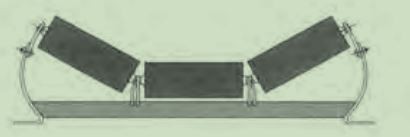 Afrikaans
Afrikaans  Albanian
Albanian  Amharic
Amharic  Arabic
Arabic  Armenian
Armenian  Azerbaijani
Azerbaijani  Basque
Basque  Belarusian
Belarusian  Bengali
Bengali  Bosnian
Bosnian  Bulgarian
Bulgarian  Catalan
Catalan  Cebuano
Cebuano  Corsican
Corsican  Croatian
Croatian  Czech
Czech  Danish
Danish  Dutch
Dutch  English
English  Esperanto
Esperanto  Estonian
Estonian  Finnish
Finnish  French
French  Frisian
Frisian  Galician
Galician  Georgian
Georgian  German
German  Greek
Greek  Gujarati
Gujarati  Haitian Creole
Haitian Creole  hausa
hausa  hawaiian
hawaiian  Hebrew
Hebrew  Hindi
Hindi  Miao
Miao  Hungarian
Hungarian  Icelandic
Icelandic  igbo
igbo  Indonesian
Indonesian  irish
irish  Italian
Italian  Japanese
Japanese  Javanese
Javanese  Kannada
Kannada  kazakh
kazakh  Khmer
Khmer  Rwandese
Rwandese  Korean
Korean  Kurdish
Kurdish  Kyrgyz
Kyrgyz  Lao
Lao  Latin
Latin  Latvian
Latvian  Lithuanian
Lithuanian  Luxembourgish
Luxembourgish  Macedonian
Macedonian  Malgashi
Malgashi  Malay
Malay  Malayalam
Malayalam  Maltese
Maltese  Maori
Maori  Marathi
Marathi  Mongolian
Mongolian  Myanmar
Myanmar  Nepali
Nepali  Norwegian
Norwegian  Norwegian
Norwegian  Occitan
Occitan  Pashto
Pashto  Persian
Persian  Polish
Polish  Portuguese
Portuguese  Punjabi
Punjabi  Romanian
Romanian  Russian
Russian  Samoan
Samoan  Scottish Gaelic
Scottish Gaelic  Serbian
Serbian  Sesotho
Sesotho  Shona
Shona  Sindhi
Sindhi  Sinhala
Sinhala  Slovak
Slovak  Slovenian
Slovenian  Somali
Somali  Spanish
Spanish  Sundanese
Sundanese  Swahili
Swahili  Swedish
Swedish  Tagalog
Tagalog  Tajik
Tajik  Tamil
Tamil  Tatar
Tatar  Telugu
Telugu  Thai
Thai  Turkish
Turkish  Turkmen
Turkmen  Ukrainian
Ukrainian  Urdu
Urdu  Uighur
Uighur  Uzbek
Uzbek  Vietnamese
Vietnamese  Welsh
Welsh  Bantu
Bantu  Yiddish
Yiddish  Yoruba
Yoruba  Zulu
Zulu conveyor belt parts and functions
Understanding Conveyor Belt Parts and Their Functions
Conveyor belts are an essential component of many industrial processes, serving as the backbone of material handling systems in factories, warehouses, and distribution centers. Understanding the various parts of a conveyor belt and their functions is crucial for ensuring efficient operation, maintenance, and safety in any setting where they are used.
1. Belt Material
The belt itself is the most recognizable part of a conveyor system. Conveyor belts can be made from various materials, including rubber, fabric, metal, and plastic. Each material is chosen based on the specific application requirements, such as the type of materials being transported, the operating environment, and the load capacity. For example, a rubber belt is often used for heavy loads due to its high durability and friction properties, while a fabric belt may be used for lighter items.
2. Idlers
Idlers are the rollers that support the belt and help it to move smoothly along the conveyor system. They are essential for maintaining the tension of the belt and reducing friction as it moves. There are several types of idlers, including troughing idlers, which hold the belt in a “V” shape to help contain materials, and return idlers, which support the belt on its return path. Properly spaced and well-maintained idlers can significantly extend the lifespan of the conveyor system.
3. Pulleys
Pulleys are critical components that drive the movement of the conveyor belt. They are located at both ends of the conveyor system and include the drive pulley, which is powered by a motor, and the tail pulley, which supports the belt's return journey. The drive pulley plays a key role in determining the speed and direction of the belt's movement. Pulleys are designed to accommodate various belt types and loads, and their alignment is vital for efficient operation.
4. Drive Motor
conveyor belt parts and functions

The drive motor provides the necessary power to move the conveyor belt. It is usually electric and can be controlled for speed and direction adjustments. Selecting the right motor is crucial, as it needs to match the load requirements of the conveyor system. Additionally, the motor should be equipped with proper safety features to prevent overheating and ensure the system’s reliability.
The conveyor frame is the structure that supports all the other components of the conveyor system. It is typically made of steel or aluminum and is designed to withstand the weight of the load while maintaining the system’s integrity. The frame design varies depending on the application; for example, a heavy-duty frame may be required for transporting heavy materials, while a lightweight frame may suffice for less demanding applications.
6. Side Rails and Guides
Side rails and guides are additional components that help to keep materials on the conveyor belt and prevent misalignment. They can be adjustable to accommodate different load sizes and are especially useful for preventing spilling or falling of materials during transport.
7. Safety Devices
Safety is paramount in any conveyor system. Safety devices, such as emergency stops, guards, and alarms, are installed to protect operators and maintain safe working conditions. These devices help prevent accidents caused by mechanical failures or human errors, ensuring that the conveyor system operates without harming personnel or equipment.
Conclusion
In summary, conveyor belts are composed of various parts, each with a distinct function that contributes to the overall efficiency and safety of material handling processes. Understanding these components—such as the belt material, idlers, pulleys, drive motor, conveyor frame, side rails, and safety devices—can help operators maintain and troubleshoot their systems effectively. As industries continue to evolve, efficient conveyor belt systems will play an indispensable role in streamlining operations and enhancing productivity.
-
Revolutionizing Conveyor Reliability with Advanced Rubber Lagging PulleysNewsJul.22,2025
-
Powering Precision and Durability with Expert Manufacturers of Conveyor ComponentsNewsJul.22,2025
-
Optimizing Conveyor Systems with Advanced Conveyor AccessoriesNewsJul.22,2025
-
Maximize Conveyor Efficiency with Quality Conveyor Idler PulleysNewsJul.22,2025
-
Future-Proof Your Conveyor System with High-Performance Polyurethane RollerNewsJul.22,2025
-
Driving Efficiency Forward with Quality Idlers and RollersNewsJul.22,2025





























